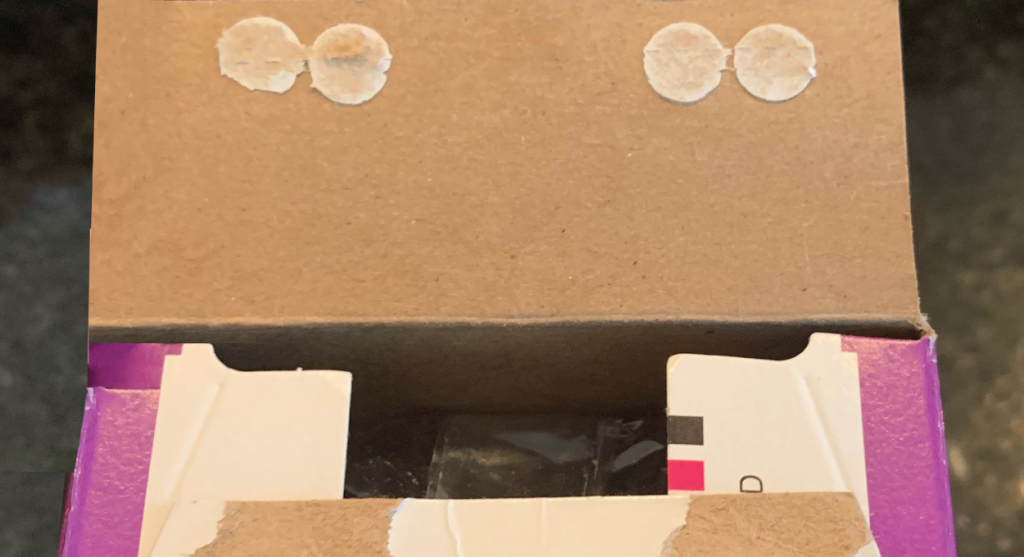I often hear colleagues discussing their take on various adhesive related topics. Most recently, the conversation was about hot melt glue systems vs. tape systems in the packaging industry. I questioned whether one system was truly more beneficial than the other or if it was just the right choice for a few specific groups. And if not, why not? In formulating an opinion, I thought whom better to ask than my colleagues who are specialized in both? From a cumulative response, a pattern was discovered. I noticed a set of 5 differences. I have listed them here with the hope that this might also benefit you when trying to decide which system is right for you.
1) Consumption: If you have sustainability requirements, it’s important to consider how much glue is being used. A hot melt system applies less adhesive with the ability to provide a shorter glue line. Small amounts are used on the minor flaps as compared to a roll that uses more glue.
The tape roll is replaced once it reaches its end, but before the entire tape roll can be used. Most companies that tape will replace the roll that is not finished during a changeover. This can cause up to 10% of waste. No replacement is needed with hot melt. In addition to this, about three inches past the end on both sides is necessary to provide the strength needed. Which leads me to our next point…
2) Strength: Strength is important in most situations. Broken bonds can result in product jams on the line. Once the shipment makes it out for delivery, a deeper strength is sometimes required for adverse weather or wear-and-tear caused by moving and re-use. Hot melt not only burns into the microfibers of the box but also continues to burn several minutes past the compression section of the parent machine. Product tape does not gain additional strength after application.
A glued box is more secure after the glue has been applied and transformed from liquid to solid. The box will remain sealed until the product has reached the end-user. If using tape, cutting the tape can easily open the box. To re-seal, the new tape must be applied.
How do you know what type of strength you need? Well, subsequent drop tests show that boxes sealed with hot-melt outperform those with tape. The deeper bond is necessary if you believe you need additional security with the possibility of a dropped box.
3) Price: I am confident that most of you are looking to find the best deal. Unfortunately, one place that tape and hot-melt systems are alike is in their fluctuation of price off-set by the cost of raw materials. However, in order to produce tape, a large and expensive coating system is required to apply costly pressure-sensitive adhesive to the product. This is an additional step in the process adding additional cost to the customer. Once adhesive is manufactured, it is shipped in a number of sizes, from 25-pound boxes to 250-pound totes; all of which have an effect on the price of adhesive.
Packaging companies that use corrugated boxes can use a less expensive adhesive (EVA) to lower cost. Hot melt equipment has the ability to control the amount of adhesive used through several different methods: pattern placement, pattern length, and stitching the same length (up to a 50% reduction).
The actual adhesive for a hot-melt system costs somewhere between $2.50 and $3.50/lbs. Tape is about $8-$10 a roll.
4) Safety: When it comes to safety, as with most machinery equipment, both hot-melt and tape systems involve some risk. Hot melt is usually installed inside a secure machine that you cannot operate while the doors are open. If touched improperly, there is a risk of burn. However, there are a number of systems available with safety features available to prevent this from happening. One example is a locking lid feature. This inhibits the user from coming in contact with the unit during operation to prevent any potential burn. Another feature, as seen on Valco Melton’s new EC Series Melter, forces the unit to lose pressure if the doors are open. On the other hand, tape machines’ cutting blades can be dangerous. During operation and when changing out the roll, the cutting blade is exposed offering little protection to operators.
5) Maintenance Cost: For both tape machines and hot melt equipment, the maintenance is about the same. Each has moving parts that may fail. Standard preventative maintenance is also necessary for both. Knowing this, it’s important to compare the potential cost of maintenance care. Hot melt equipment has a larger upfront cost ranging from 5-10k for a new line with 5-7 year life. New, high-end tape machines can cost around the same. Others will cost less overall if you use the same machine for more than 10 years. Hot-melt parts are changed out more often than tape seal equipment. However, the cost of these parts can be recovered if you can focus on using less glue to provide a superior bond.


